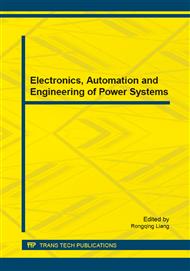p.336
p.340
p.345
p.350
p.354
p.358
p.365
p.369
p.375
Research on the Model-Follow H-Inf Loop Shaping Control Based on the Simulated Annealing and Niche
Abstract:
The attitude control of unmanned helicopter builds the foundation for velocity and trajectory control. Based on the model-follow control system, a kind of attitude controller is desisgned combining loop shaping control method. The model is reduced by combination of direct decoupling and pode approximation and the inverse model is designed. The parameters of the weighting function are determined via seeking answers for a multi-objective optimization problem and an improved multi-objective optimization genetic algorithm is proposed. Simulated annealing algorithm is introduced to strengthen the capability of local research. An improved niche selection technology is raised and the distance among individuals is set as a dynamic function. The attitude control system of the unmanned helicopter is designed and the satisfied track result and robustness of the improved controller are verified via digital simulation.
Info:
Periodical:
Pages:
354-357
Citation:
Online since:
February 2015
Authors:
Price:
Сopyright:
© 2015 Trans Tech Publications Ltd. All Rights Reserved
Share:
Citation:


